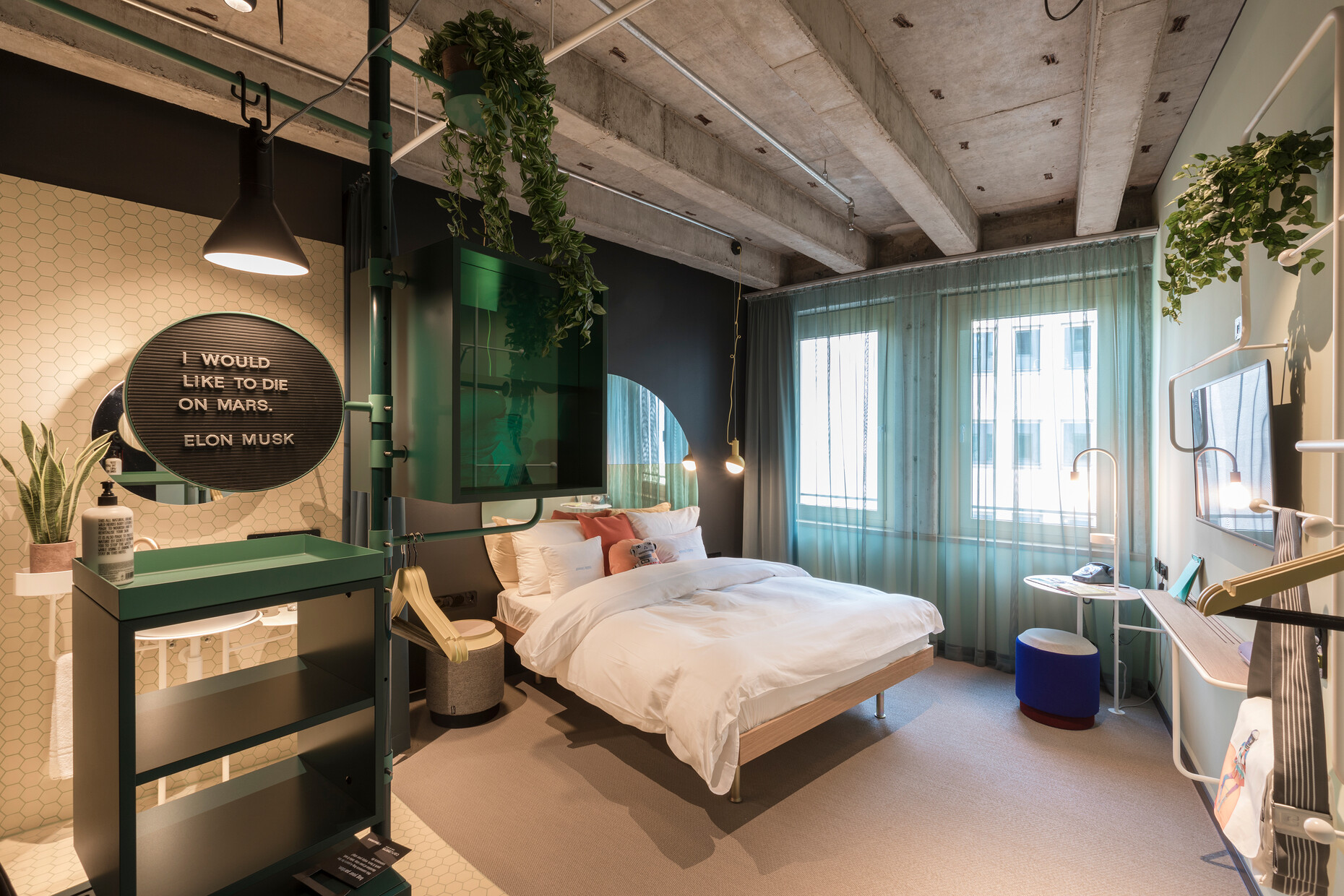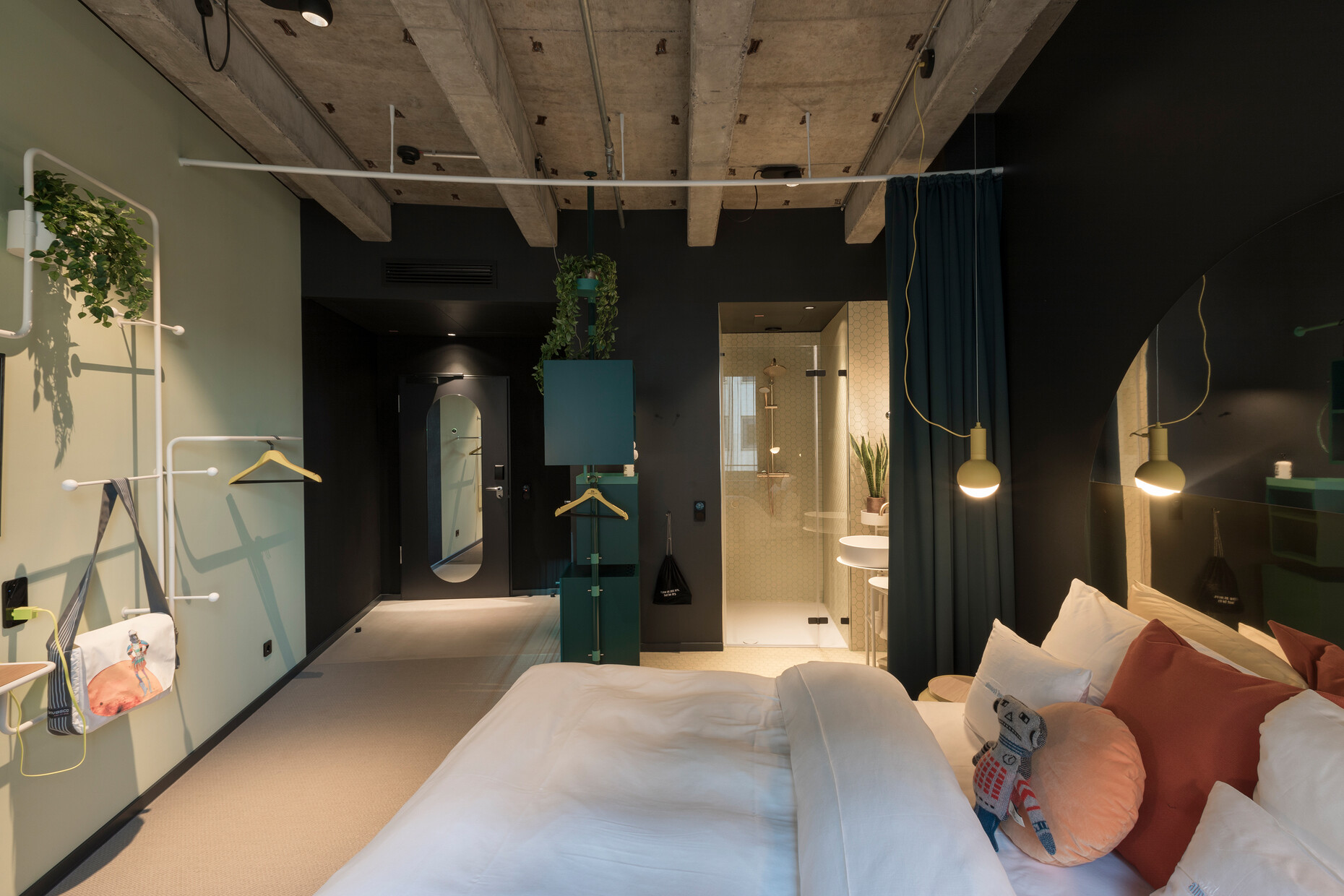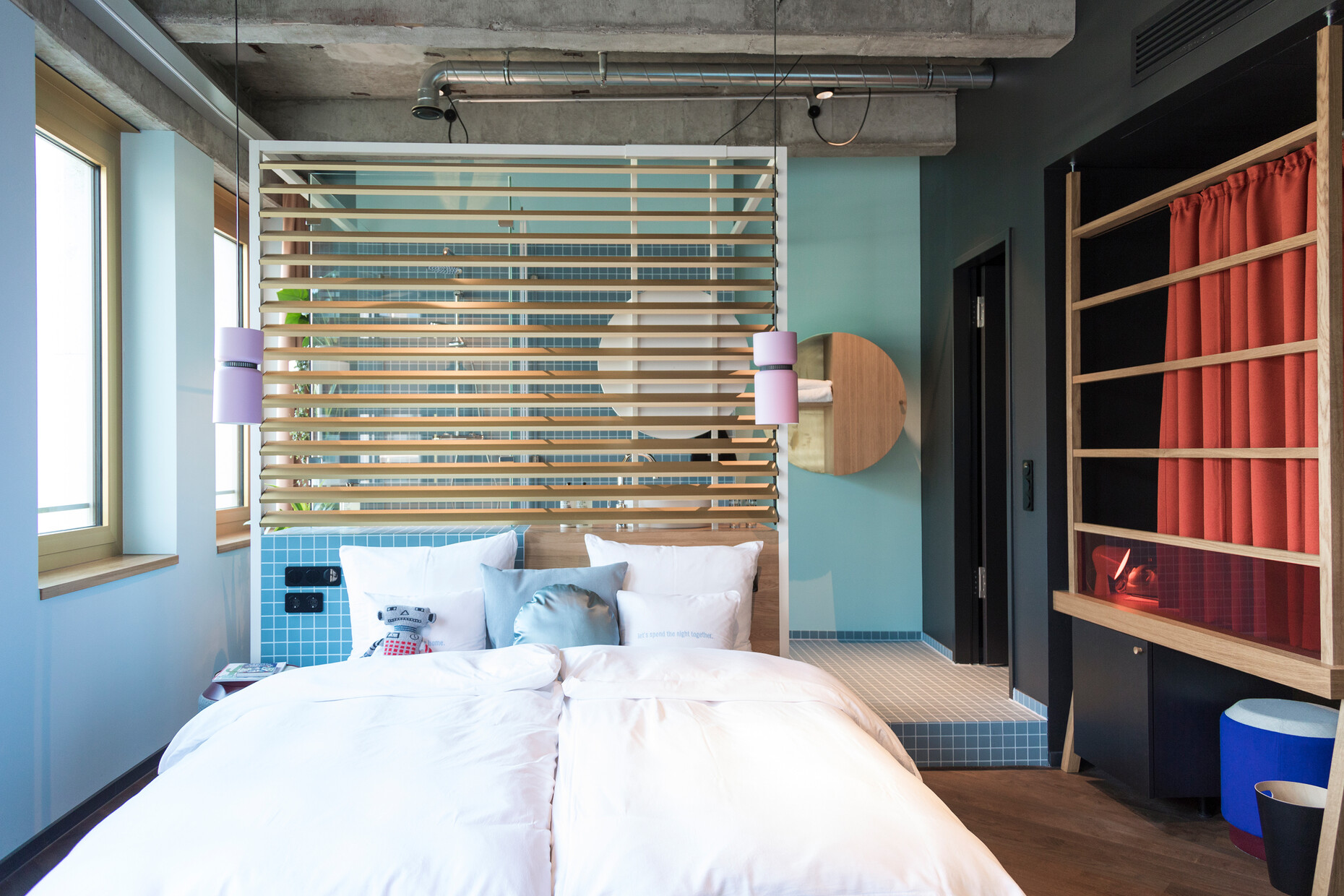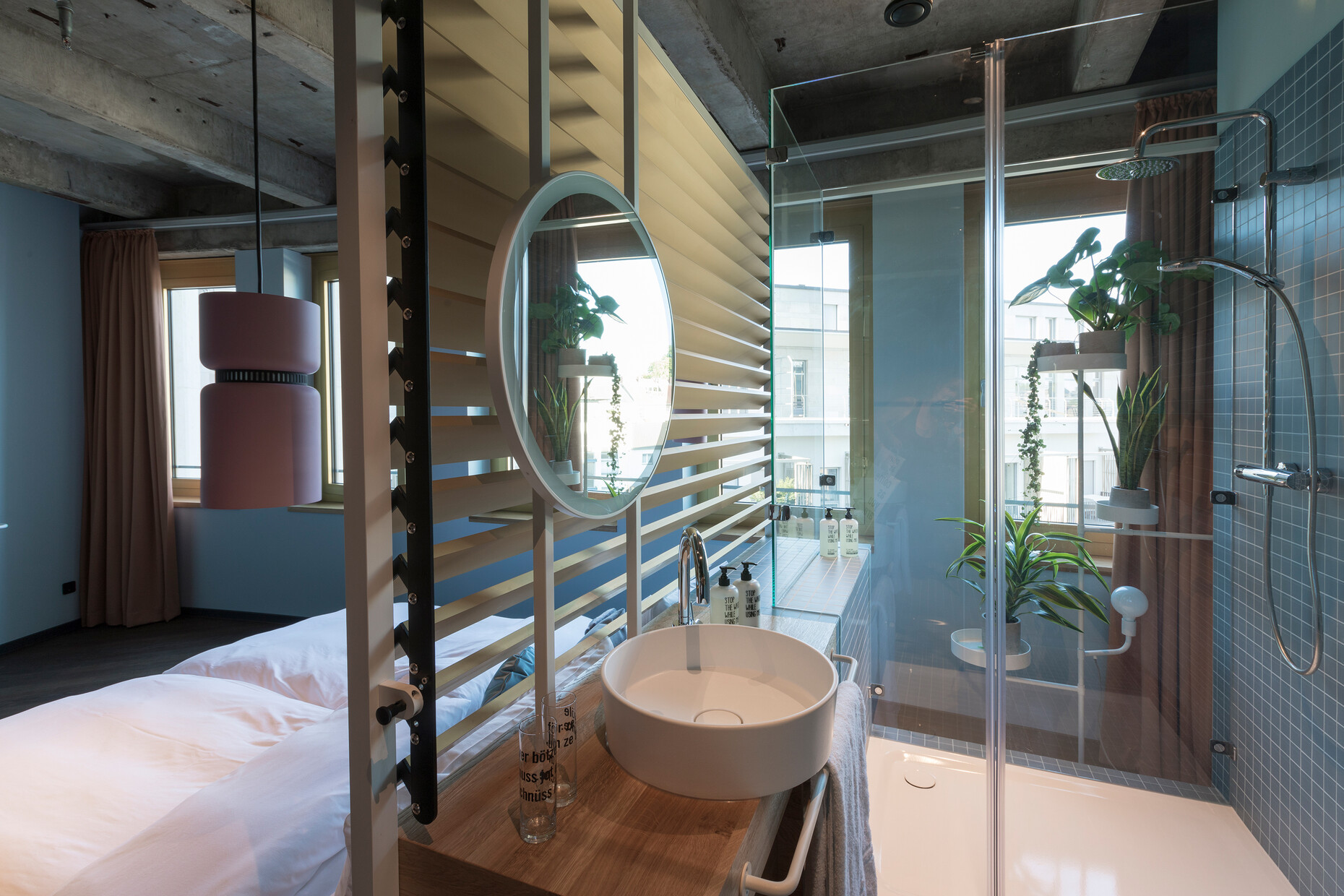Centered on surprise
“If everything were the same as it is at home, you wouldn’t need to stay at 25 Hours!,” says Werner Aisslinger, describing the claim of the now international hotel chain based in Hamburg. And so, with his latest coup – the 25 Hours Hotel “The Circle” in Cologne – the designer faced the challenge of putting a very particular spin on the establishment. As previously for his riotous 25 Hours Hotel at Berlin Zoo’s Bikini Haus, in Cologne the designer was once again confronted with a listed building of the postwar modernist era. The contrast between the two buildings is striking, however: The Bikini Haus was built between 1955 and 1957, and with its light and delicate feel it links up directly to the avant-garde of the Weimar Republic and the latest developments in the USA. By contrast, the former administrative building of the Gerling Corporation in Cologne, which was built between 1961 and 1966 by Franz-Heinrich Sobotka and Gustav Müller, stands in the tradition of a very moderate modernism. With its perforated façade of shell limestone and its heavy volumes, the building oozes the solidity the insurance company itself believed to possess – architecture that is representative of federal Germany’s Economic Miracle. “Somewhat stuffy,” in the eyes of Werner Aisslinger. When he and his team began their deliberations on the concept for the new hotel, they quickly came to the conclusion that they would work to counter this atmosphere somewhat. The hotel needed to feel more exciting, to exude the unbroken belief in the future and the enthusiasm for technology of the 1950s and 1960s. James Bond and science fiction were two of Aisslinger’s sources of inspiration for his design,and the building’s extraordinary floor plan played right into his hands here. Indeed, Sobotka and Müller created an eight-story office building in the form of a three-quarter circle centered around an enormous circular foyer. This architecture, particularly the round foyer with its intriguing ceiling design, already bore a certain similarity to the famous Bond filmsets by Ken Adam.
The round form is also reflected in many of the items of furniture that Werner Aisslinger designed for the hotel: in the “Cirql” outdoor furniture range, for example, which is to be series produced in future by Dedon, as well as the “Geo” family of armchairs, which will soon be available at Cappellini. More generally, Aisslinger is increasingly inspired by geometric elemental forms – a tool he uses to create a counterweight for the user to the ever increasing complexity of the environment. What the designer definitely didn’t want, however, was simply to “implant” the mood of the 1950s and 1960s with vintage furniture. It has to be possible, Aisslinger believes, to create an environment that radiates liveliness instead of sterility even without the use of real and fake “salvaged” items. It is perhaps because of his roots as a product designer, he suspects, that he sometimes wants the designs for his architectural projects to be all-encompassing. “Ultimately, Arne Jacobsen’s SAS Hotel in Copenhagen, where he designed everything right down to the faucets, remains the model.”
Indeed, the guest rooms at the 25 Hours hotel are also far removed from any chain hotel monotony and clearly bear the hallmarks of Werner Aisslinger’s design. “We focused on the central themes of staying in a hotel: sleeping and personal hygiene.” As such, the bathroom had to be more than just a prefabricated wet room, as is becoming the standard even in premium establishments.“ The intention was to draw the bathroom into the room.” In the smaller of the two room types, there is virtually no subdivision. Furthermore, in order to create a more spacious feel in the room a decision was made not to dedicate a lot of space to storage. Instead, Aisslinger worked with an elaborate multifunctional wall combining racks and hooks and a storage unit comprising a metal bar that holds various boxes. In the larger rooms, a wooden slatted screen acts as a headboard to the bed and a divider for the bathroom area, which takes up almost half of the floor space in the room and emphasizes the importance that Aisslinger attributes to the bathroom for a hotel stay. Ultimately, only a small proportion of guests use the restaurant, bar or spa, he says, but they all use the bathroom. And at the end of the day, the aim is also to convey what’s special about the 25 Hours hotels: “Here the key guest experience should always be surprise,” says Aisslinger. “The room has to be memorable, even if you arrive late at night and check out the next morning.”
















